Go out some clear night and look up at the night sky, it’s much better if you can get away from big city lights by the way. If you think about it there really aren’t that many different types of objects up there. Aside from the Moon, if it’s out, all there really is up there are a lot of points of light, stars. O’k some stars are certainly brighter than others, and if you look closely it is easy to see that there are some stars with distinct colour to them. Nevertheless, from here on Earth the Universe just looks like a lot of points of light, a lot of stars.

Of course we all know that’s not true. With the invention of the telescope we quickly learned that stars and planets are very different. We also learned that some stars are giants while some are dwarfs.
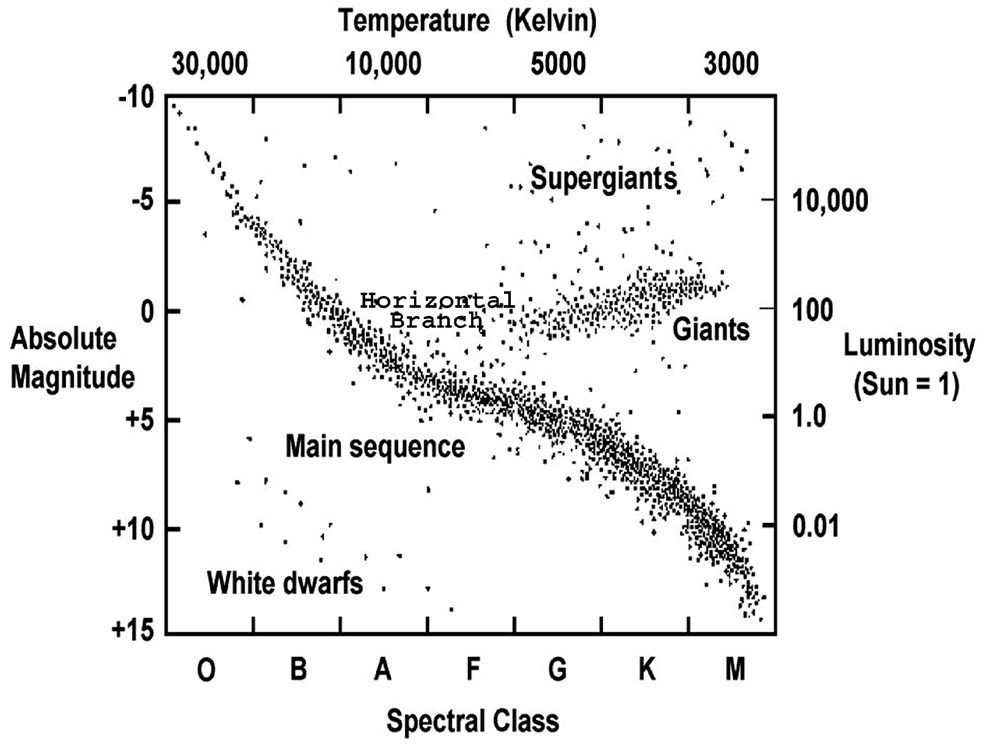
Then, as new types of telescopes were invented, other stranger kinds of objects were discovered. Radio telescopes discovered both quasars and pulsars while X-ray telescopes discovered black holes. One very unusual discovery was made when CIA spy satellites were the first to observe Gamma Ray bursts.
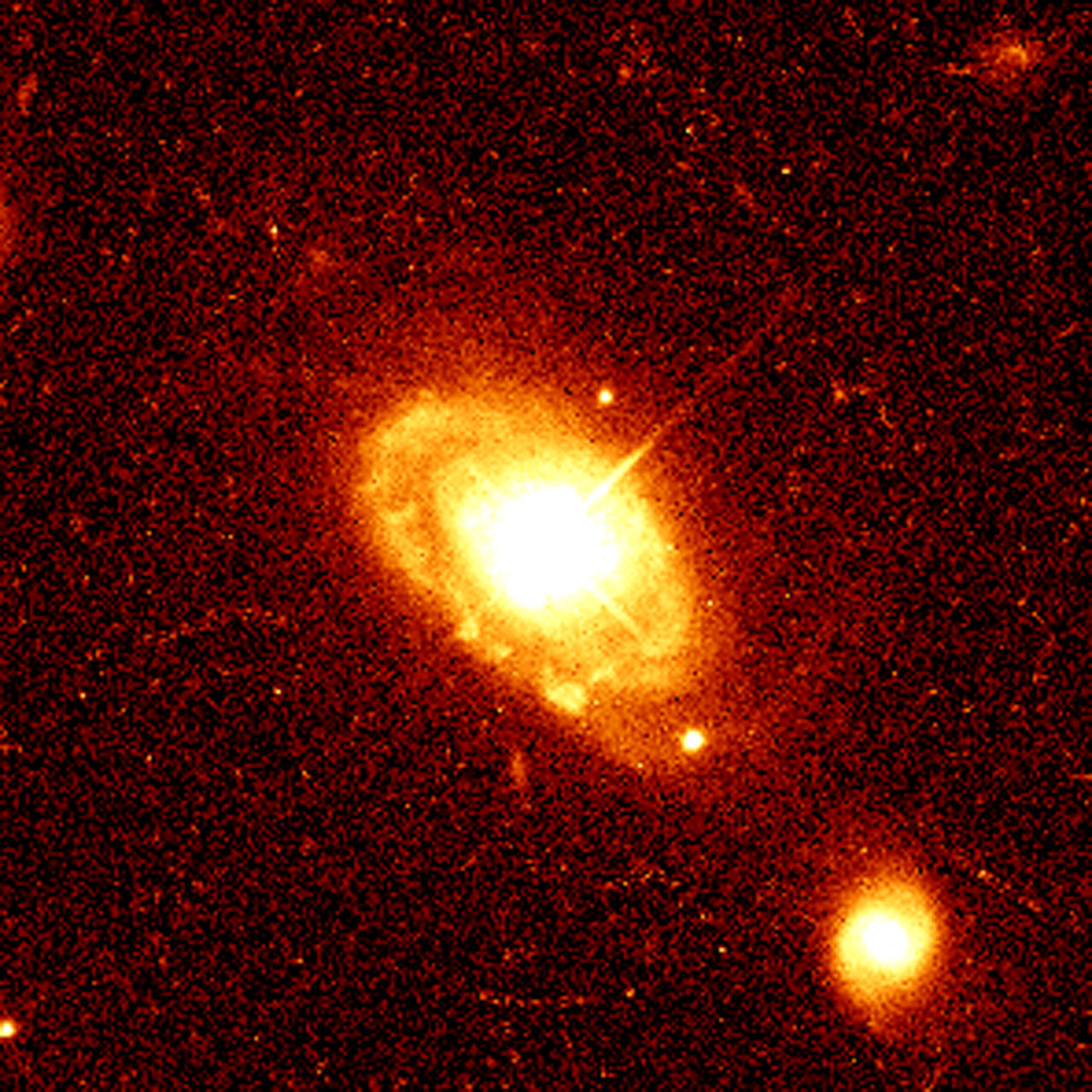
Based upon the observations from those telescopes astrophysicists then had to figure out what those objects actually were. Quasars for example turned out to be supermassive black holes in the centers of distant galaxies that are devouring nearby stars and releasing some of that energy feast. Pulsars are the remains of stars that went supernova, been crushed down into neutron stars and are emitting radio waves like a lighthouse. Gamma Ray Bursts on the other hand are caused by giant stars collapsing into black holes.
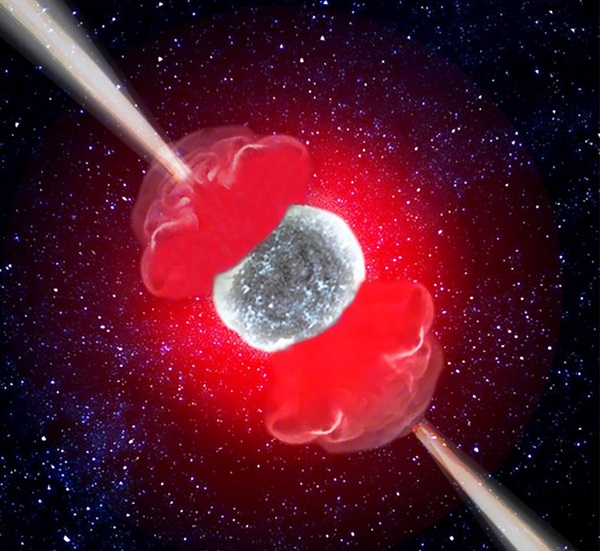
Fast Radio Bursts (FRBs) are the newest member of the cosmic zoo. Now FRBs are exactly what they sound like. Without any warning a powerful burst of radio waves occurs that only lasts for a tiny fraction of a second. Transient events like FRBs are a curse to scientists because you’re never looking right at it when it happens, and by the time you say ‘what was that’ and turn around to look at it it’s gone.
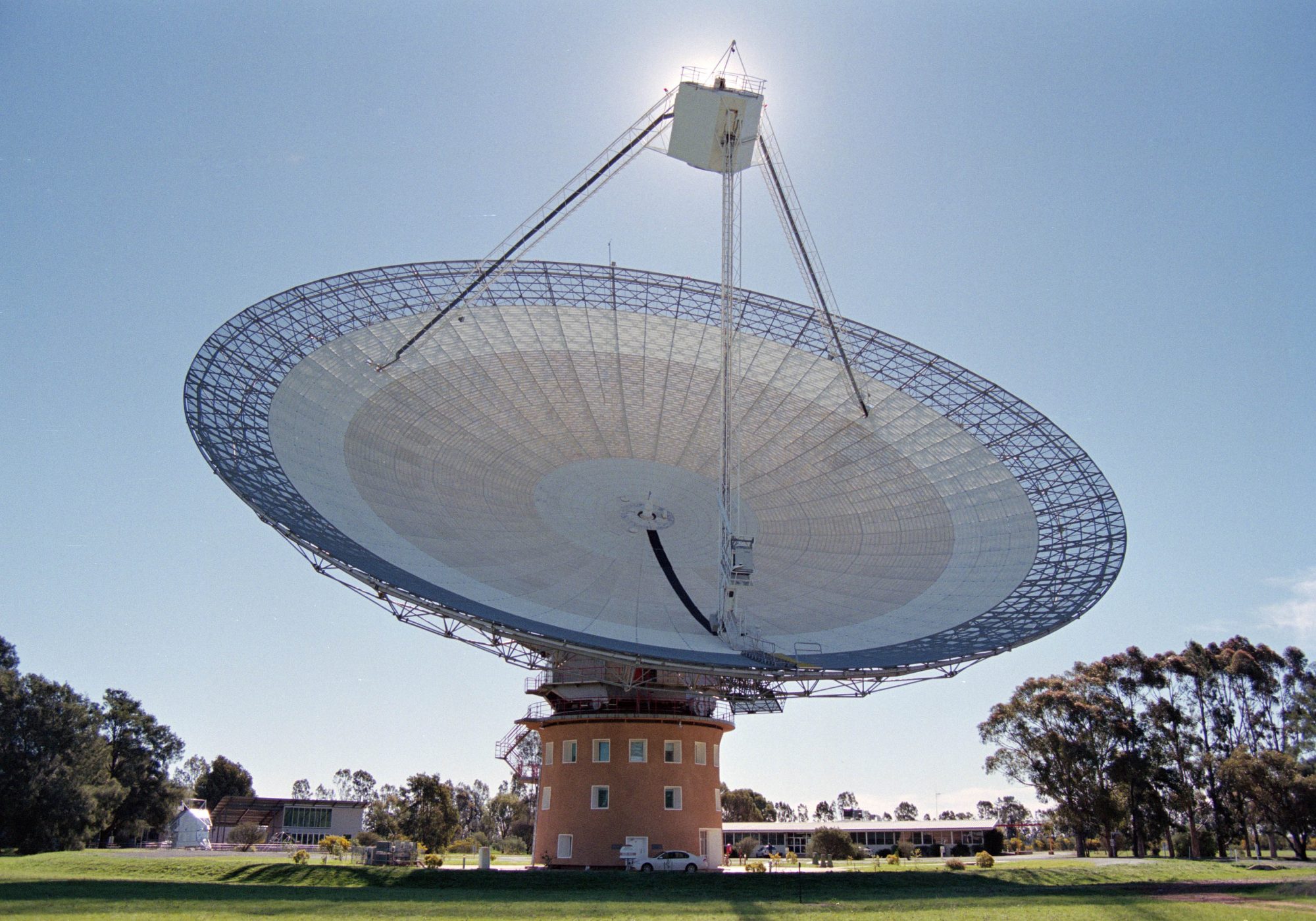
In fact the very first FRB was actually ‘discovered’ in an analysis of old data from the Parkes Observatory in Australia. The data had been collected in 2001 but the FRB wasn’t recognized until 2007. Then it wasn’t until the 15th of January in 2015 that an FRB was detected live, also at Parkes Observatory. Canada’s new Canadian Hydrogen Intensity Mapping Experiment (CHIME) radio telescope, which unlike other radio telescopes is designed to have a wide field of view, has detected dozens of FRBs since it first went online in 2018.
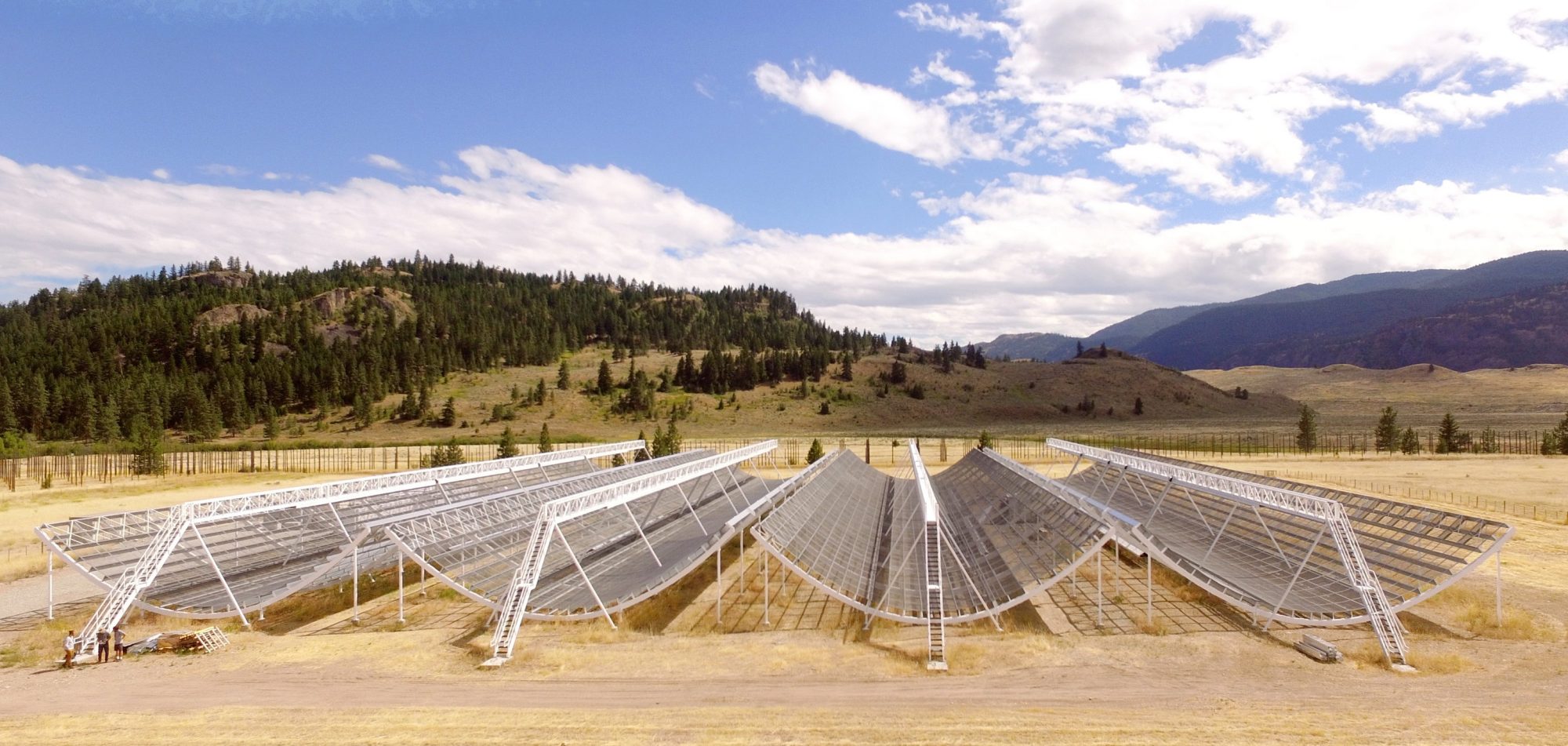
One of the few things that we do known about FRBs is that the most common frequencies of the burst are from around 800-1400 Mega-Hertz (MHz), that’s not to far from the frequencies used by your cellphone. Also, when astronomers say fast they mean really fast, each event being a single spike of radio waves lasting no more than a few milli-seconds. And because FRBs are scattered evenly across our sky, rather than being concentrated along the Milky Way, they must come from intergalactic space, perhaps as far away as billions of light years. At those enormous distances the energy released during those few milliseconds must be more than our Sun emits over the course of more than a dozen years.
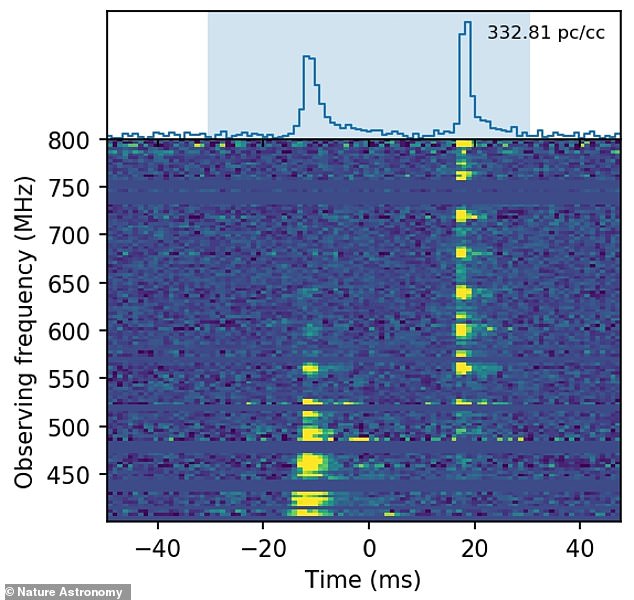
The mystery of FRBs has generated a lot of attention in the astronomy field and with all of that interest it’s not surprising that new discoveries are being made every year. A few FRBs have been discovered that are irregular repeaters, that is they have erupted more than once but without a predictable pattern. On the other hand FRB 180916 has been found to repeat on a schedule of once every 16.35 days. (By the way FRBs are numbered by the year, month and day they were first observed hence FRB 180916 was observed on the 16th of September in 2018.)
Just this past April an FRB was definitively detected as coming from inside our own galaxy and astronomers believe that they can even identify the source as the known object magnetar SGR 1935+2154 which is located in the constellation Vulpecula at a distance of about 30,000 light years. This is significant because some astrophysicists have been promoting magnetars as a possible source for FRBs for the past several years.
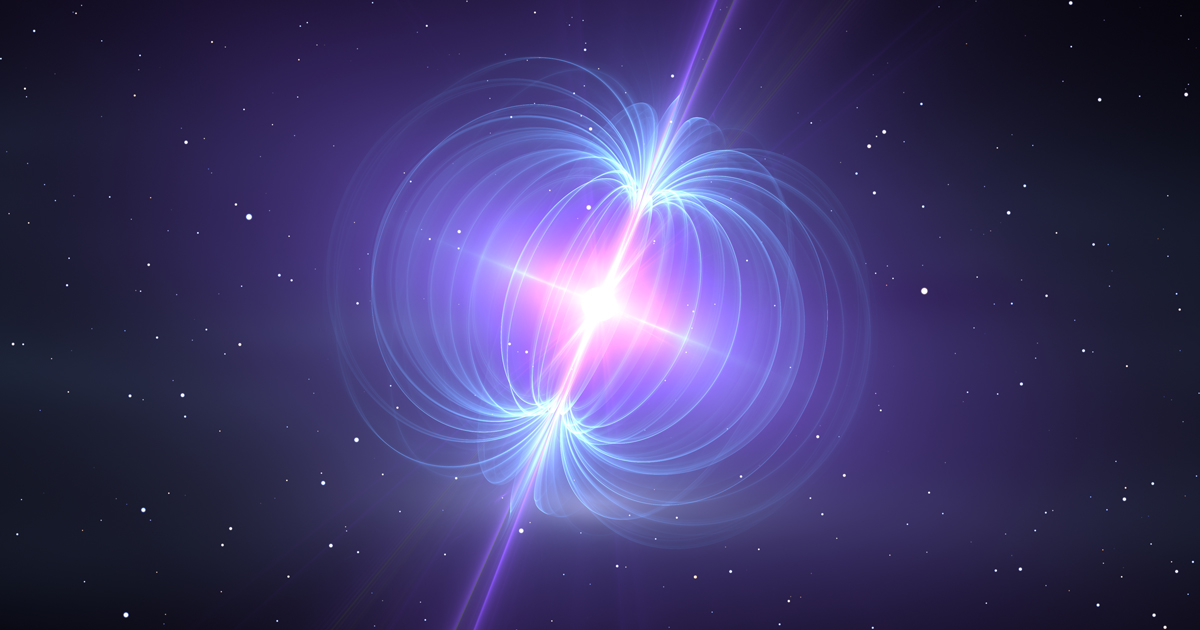
Now magnetars are the dead corpses of massive stars that exploded as supernovas. What remains after that explosion is an object about as massive as our Sun crushed down to the size of a city, an object so dense that it has become composed mainly of neutrons, a neutron star. As the star was squeezed its magnetic field also got compressed. But while compressing a magnetic field may decrease its size it also increases its intensity and a neutron star with a particularly strong magnetic field is given the special name of magnetar.
But wait, didn’t I say near the top of this post that neutron stars are also known as pulsars. Yes indeed, in fact all of these creatures are so closely related that astrophysicists argue all of the time where one class ends and another begins, in fact many neutron stars may be both pulsars and magnetars at the same time.
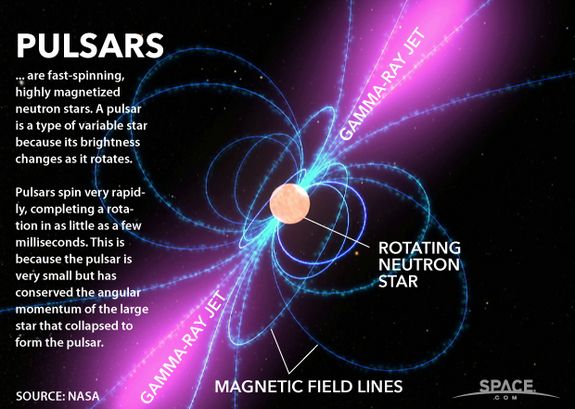
And just because one FRB has been identified as coming from a magnetar doesn’t mean that they all do. There may be even more exotic animals in the cosmic zoo that are as yet completely unknown such as dark matter particles or even cosmic strings. So far we’ve figured out a bit about FRBs but there’s still a lot more to learn. But then isn’t that the whole fun of astronomy!
